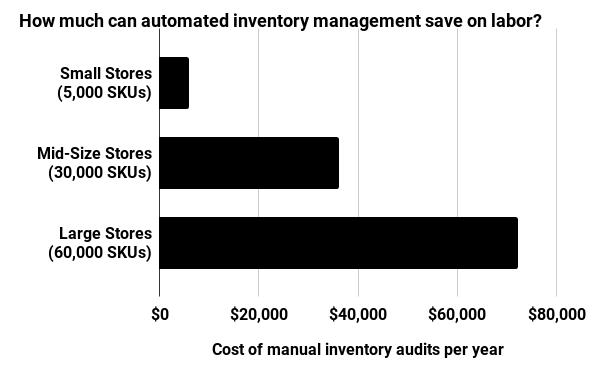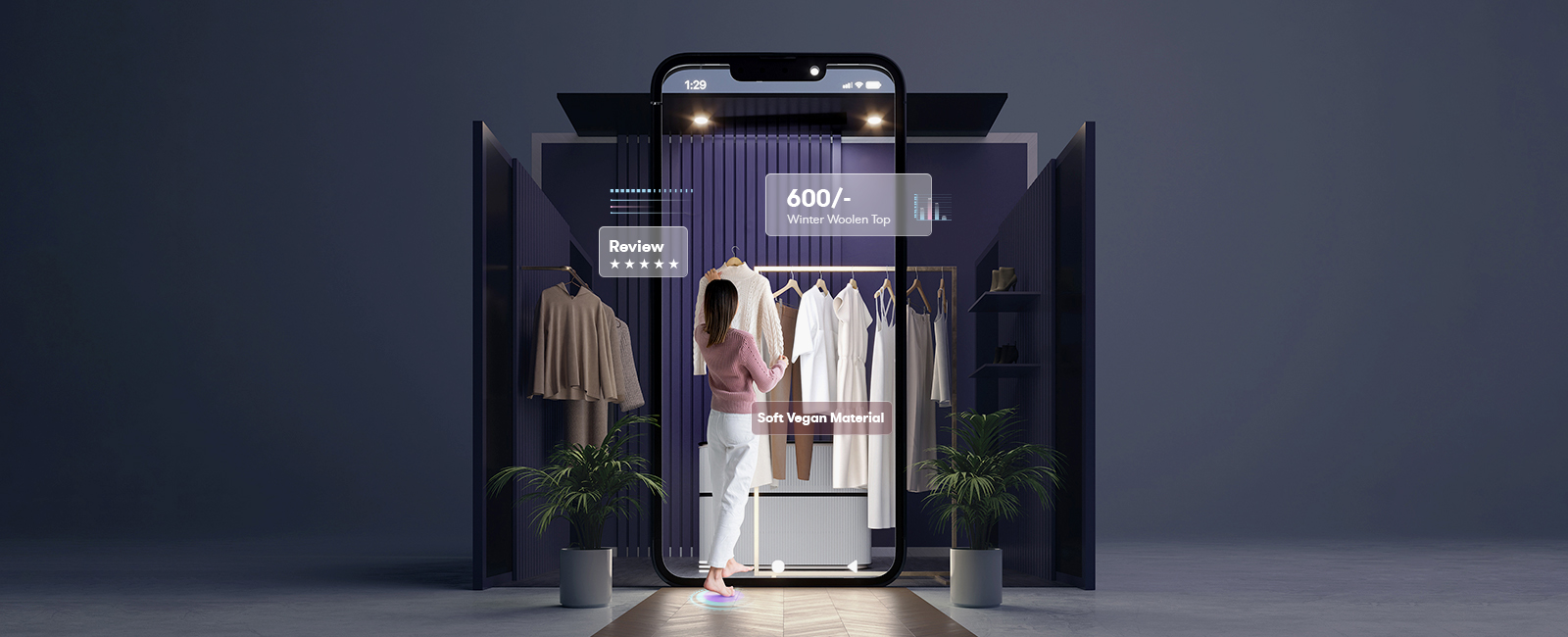The retail landscape is evolving rapidly and 2024 promises to be a year of tech-embedded shifts.
As consumers’ preferences and behaviors continue to evolve, retailers must adopt retail technology trends or risk becoming obsolete. There is now an urgency for retailers to reinvent themselves for the AI-led revolution.
The future of shopping is not just about convenience – it is about merging the online and offline consumer experience. This exciting new era, often referred to as “clicks and bricks,” is all about creating a holistic shopping experience that matches the expectations of the modern consumer.
Imagine you are scrolling your favorite online store, and suddenly, a virtual assistant pops up, offering personalized recommendations based on your past purchases and browsing history. This isn’t fantasy, in fact, it’s already happening in 2024!
Whether it is the rise of experiential retail, omnichannel strategies, automation, sustainable practices, or integration of AI, the retail industry is at the pinnacle of progressive transformation.
Let’s dive into this blog to find out the hottest retail technology trends for 2024. The shopping revolution has begun and will be a game-changer for retailers and consumers!
Retail Industry Technology Trends of 2024
#1. Omnichannel Retailing
As the boundaries between online and offline markets are blurring, hybrid shopping will be one of the striking retail technology trends of 2024. According to the OnlineDasher, Omnichannel shoppers have a 30% higher lifetime value than the shoppers who shop using only one channel.
Unified order management systems will grant inventory visibility across all stores and warehouses for effortless fulfillment. Also, it will be convenient to order online and return items in-store, thanks to connected POS systems and improved order tracking.
Customers can check online to view stock availability. The real-time inventory visibility enhances the consumer experience and avoids wasted trips.
Additionally, Click and Collect will continue to grow since its rise during the pandemic when it facilitated consumers to maintain social distancing and dodge crowds. To sum it up, omnichannel retailing will support retailers in creating a holistic brand experience along with enhanced customer loyalty and satisfaction.
#2. Experiential Retail
According to a report by Shopify, 32% of consumers say they’re likely to engage with in-store experiential moments.
Experiential retail is a novice retail technology trend to generate foot traffic. It involves engaging customers through various sensory elements, interactive displays, and innovative technologies to make the shopping process more enjoyable, memorable, and personalized.
The aim is to build a deeper emotional connection and enhance overall customer satisfaction. It is the bulletproof way to provide a holistic, memorable, and extraordinary customer experience.
Here are a few examples of creative retailers leading the charge in experiential retail:
- Apple stores are purposefully designed to provide customers with a hands on experience, encouraging them to play and interact with their products.
- Nike’s flagship stores feature immersive experiences including interactive displays and fitness zones. The Nike by You customization station allows customers to design their sneakers.
- H&M flagship store in NYC introduced a digital assistant. It assists consumers to find the products they’re looking for, suggests outfits while providing styling tips. Apart from this, H&M installed smart mirrors in some of their stores. These mirrors offer features like personalized styling recommendations, virtual try-on capabilities, and the ability to request different sizes or colors through the mirror’s interface.
- Samsung experience stores offer a range of interactive displays for customers to test and experience the latest technologies.
- Lush’s cosmetics brand stores are designed with colorful displays, product demonstrations, and interactive features. Customers can touch, feel, and experience the products before purchasing.
#3. AI and Personalization
The retail landscape is undergoing an unprecedented change fueled by AI. According to research by Fortune Business Insights, AI in retail was valued at USD 5.5 billion in 2022 and is projected to grow from USD 7.14 billion in 2023 to USD 55.53 billion by 2030.
The numbers are tempting right?
Get used to a virtual shopping assistant following you through the store as a helpful companion. It is the future, and it definitely sounds intriguing! Powered by AI, chatbots can promptly answer your questions about product details, stock availability, and even navigate you to the exact section you need.
No more wandering aimlessly through different store sections! These chatbots can also leverage your past purchases history to suggest items you might genuinely love while saving you precious time and unnecessary confusions.
Facial recognition technology, while still evolving due to privacy concerns, holds immense potential. This technology allows stores to recognize visitors and welcome them. It can offer personalized recommendations based on past purchases or browsing behavior.
Starbucks’ Deep Brew AI is the greatest example of how AI is rewriting the retail landscape. This platform analyzes customer data to personalize drink recommendations, ensure stores are stocked with items, and make data-driven decisions about inventory management and staffing. Watch the below video to understand how it works:
Curious about how AI can transform your retail business?
#4. Superior Automation
Automating processes lies at the core of retail operations in enhancing efficiency, elevating the shopping journey, and empowering retailers to stay competitive in a dynamic market environment.
Let’s explore the key advantages of automation,
A. For Fail-Proof Inventory Management
Automation has been redefining the retail landscape. It offers several benefits to streamline operations, enhance customer experience, and grow retail business exponentially. One key advantage is flawless inventory management.
All these prevailing issues in inventory management can be solved with automation.

As displayed, automated inventory management substantially cuts cost and effort.
It also, helps to curb the following retail concerns:
- Risk of stockouts
- Oder delays
- Discrepancies
- Overstocking of inventory
Automated systems aptly track inventory levels, monitor stock movement, and generate automated alerts for restocking.
B. For Order Management
Automation adds more speed and precision to the order processing. Automation in order management handles high volumes of orders seamlessly, reduces processing time, and minimizes errors.
Overall, it leads to faster delivery of orders, which in turn helps retail businesses increase customer satisfaction and create a lasting impression on their customers.
C. For Self-Checkout Kiosk Systems
Retailers are adopting automation-driven self-checkout kiosk systems at lightning speed. These systems facilitate shoppers to pay for the selected items with a simple scan. It does not require the assistance of a cashier.
Self-checkouts boost the pace of the checkout process and provide a more comfortable and contactless payment option. It can help reduce labor costs and improve efficiency of your retail store.
Decathlon’s RFID Till, also known as RFID checkout point, is a crucial element of their self-service shopping experience. Here’s how it works:
#5. Sustainable Practices
According to Deloitte’s 2023 CxO Sustainability Report, 73% of Consumer Industry CXOs have increased investments in sustainability over the last year.
Unsurprisingly, sustainability has become a priority for many brands due to its soaring consumer demand. It leads retailers to gain customer loyalty and create a positive brand image while leaving an indelible mark on society.
Moreover, it can grant a competitive advantage to your business as consumers prefer eco-conscious brands over others. Initiatives like buy-back and resale of used products, recyclable packaging, renewable materials, zero-waste stores, and carbon-neutral fulfillment will secure front seat in 2024.
The below mentioned actions can mark a substantial stride towards a greener retail future for your business.
- Ethical sourcing
- Reducing single-use plastics
- Promoting recycling initiatives
- The adoption of renewable energy sources
Here is how Dell is contributing to sustainability,
The Final Take: Retail Technology Trends 2024
These latest retail industry trends are driven by technological advancements and evolving consumer preferences. The blend of these retail trends can build an unbeatable roadmap to elevate your retail business.
To sum up, it is crystal clear that successful retailers are those who don’t shy away from taking risks and embracing these evolving trends. Apart from this detailed guide, you can always rely on expert advice.
Rysun Labs can be your seasoned ally with years of in-depth experience in retail consulting. Our proficiency in AI, Data, and Digital Innovation positioned us as innovators capable of addressing the multifaceted challenges and opportunities present in the retail sector.
We offer a gamut of solutions comprising of clienteling apps, tech integration, supply chain optimization, data analytics, in-store automation, omnichannel retailing, and the list goes on! Our expertise makes us a trustworthy companion for retailers seeking to navigate the complex retail landscape.
Get ready to thrive in the terrain of unprecedented retail changes!!!
Tags





